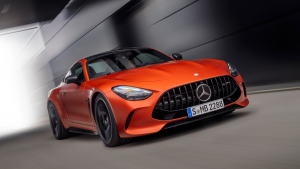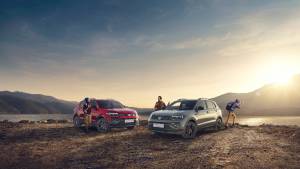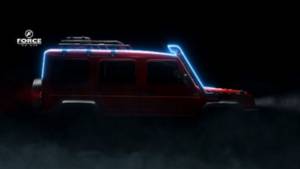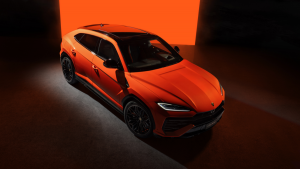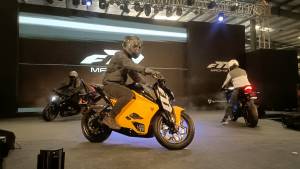Run for the money
Bertrand D'souza
Updated: July 25, 2013, 02:12 PM IST
Thinking of moving from a hatchback to a full size sedan isn't an easy decision to make. Obviously you aren't going to jump straight into the richer end of the C-segment, unless you hit the jackpot. What you ideally would be looking at is an entry level sedan. I know the choice isn't simple; if anything it is as complicated as when you plan on buying your hatchback.
Need some help whittling down the choices? Let's begin with the Ford Ikon, the Hyundai Accent, the Renault Logan and the Tata Indigo. Though these are the cheapest entry level sedans, they aren't exactly aspirational now that the taxi and fleet operators have taken a liking to them. What you are looking for is slightly more upmarket and not what every other Meru or Radio Cab looks like.
That would then lead you to the Chevy Aveo, the Ford Fiesta 1.4 or the Hyundai Verna Transform. I'm certain none of your relatives or close friends have recommended them to you. While they are competent upmarket sedans, the ownership experience hasn't exactly been friendly and neither is the public clamouring to buy them
second-hand.
That leaves you with the Maruti Suzuki Swift Dzire and the Tata Indigo Manza. Both are highly accomplished sedans, and in terms of sales easily overshadow everything else we've gone through above. Both sedans are also priced very competitively and start off where prices of most high end hatches taper off. So the transition shouldn't put any financial strain on you, and your decision could have been made by a simple toss of the coin or who gives you the better deal.
But things aren't that simple any longer because joining these two is the Toyota Etios. It hasn't accomplished anything yet since it's too new an entrant in the market. But going by Toyota's reputation you could have a complicated choice. And that begs closer inspection of all three cars in the final battle of the decade gone by.
DESIGN
I don't know if there is a standard that exists which claims that entry level sedans shouldn't be stylish. Let's face it; none of the three cars in this comparison is going to win any beauty contest. They all have the standard garnish, chrome strips and grille, shiny clear lens headlamps, metallic paints and plastic bits but nothing elevates them from the mediocrity of their overall appearance. Place them in Monday morning traffic and you'd drive past them like you'd pass a fir tree in the middle of a pine forest.
It's not that they look similar to one another; it's just that they are so incredibly unassuming that they easily blend into the traffic. Take the Dzire for instance. It's the only car here which was designed as a hatchback and then had a boot slapped on. The boot is a very distinguishing element, but it's only visible once the car is ahead of you and then it is a fairly good looking rear end, much better than the Etios or the Manza. From the front you wouldn't know a Dzire from a Swift.
The Manza too looks the same as the Indica Vista from the front, and it has enough of the family design DNA to not stand out prominently in a crowd. At best it manages to look beefier though certainly not better. The same goes for the Etios which fares even worse, because Toyota despite having a clean slate and therefore the opportunity to make it absolutely sensational, managed to make it look a bit like the Logan from certain angles. The front end of the Etios too draws some inspiration from the Innova, especially that smiling grille though the rest of the car is too plain. So rather than pass opinion on which is best designed, I'll reserve it till we scope the interiors.
The Dzire interiors are tastefully done. The way the stereo sits flush in the dashboard is very classy. Some of the detail touches also have a lot of flourish such as the nicely rounded gearshift knob, the steering wheel and the easy to use climate control unit. Even the grain and texture as well as the fit and finish of the dashboard speak volumes about Maruti wanting to target a more affluent buyer. The only problem is that the Dzire feels no different from the Swift. It's just a very familiar layout and what is required is a clear class differentiator.
The Manza does not make enough of a convincing argument to attract the upmarket crowd. The cabin is a bit of a riot with its mix of big and small elements generating more friction rather than blending cohesively. The steering wheel is a very large and dominating element in this cabin as is the huge gearshift knob though the rather small blue backlit display for the stereo and the phone and the small but rather sporty clocks shout equally loud for your attention. And that's part of the problem with the Manza; there's a lot of noise within this cabin and nothing is understated or elegant. Build, fit and finish though are nearly par for the class, but material quality needs to get much better because it does not mirror even remotely similar amounts of classiness you get from the similarly priced Dzire.
The Etios on the other hand has the dullest of the three interiors. Where the Dzire is as classy as this segment gets, and the Manza at least dramatic though not in the pleasant way, the Etios fails to rouse any emotions. If you were familiar with any Toyota you'd know that the interior is laid out and designed the way it is for a reason rather than for being attractive. I have no doubts that Toyota means well, and it has done its homework most impressively. Who else would have thought that air con vents needed to be placed one on top of the other so that the air flow is uninterrupted? Or that even a proper sedan could have its instrument console placed in the centre of the cabin rather than right ahead of the driver? Whether this enhances driving by making it safer is anybody's guess. And, though I would have left things the way they usually are, this in my opinion is a purely cost saving measure to reduce input costs when the vehicle is sold in left-hand-drive markets. Nonetheless the Etios sensibly approaches occupant comfort. It has a nearly flat floor and a flat seat for the rear occupants which neither the Manza nor the Dzire possesses in as much measure. That makes it more spacious and comfortable over both short or long journeys. My only concern with the Etios interior is that Toyota has not yet figured out how to make cost effective look and feel upmarket which is a work in progress I'm sure. The fit and finish is there but the dashboard, upholstery and trim just do not feel rich enough, which for someone who's aspiring to move up from a hatchback to a sedan may not be enough.
Yet if I had to ignore the exteriors I'd settle for the Etios because of its practicality; else the Dzire interiors are the most pleasing environment to be in.
ENGINES
Both Maruti and Tata Motors are from the school of frugal engineering. So rather than increase input costs and inventories certain products share critical components, even down to the engines. So Maruti utilises the new 1.2-litre K series engine in both the Swift and the Dzire, whereas Tata Motors uses the same (Fiat-built) 1.4-litre petrol engine in the Indica Vista Aura and the Indigo Manza. Toyota of course is new to the volumes segment and more generous in its approach, so the sedan gets the 1.5-litre petrol engine and when the hatch comes out it will have a 1.2-litre petrol (on the same family).
The Dzire then is the least powerful in this pack. Its 1197cc engine is tuned to develop 85PS of max power and 113Nm of max torque (which for a 1.2 is rather impressive). It is a strong engine but is focused on efficiency and meeting emission norms rather than performance. But Suzuki being pretty good at it, geared this car in a manner where you don't really feel the lack of horsepower. The 5-speed transmission in fact greatly contributes to the sense of performance. It's a fantastic gearbox to operate with seamless shifts and quick short throw action just like in the Swift. But like all Suzukis this engine needs to be revved hard to build pace, especially since the max power is only available at nearly 6000rpm. Even the meatiest chunk of torque is only available at 4500rpm which means both in the city and on the highways you have to work this engine strenuously.
The Manza on the contrary thanks to the larger displacement makes a bit more power and torque than the Dzire. To be precise its 1368cc engine makes 5PS more than the Dzire at the same revs and 3Nm of torque more at 4750rpm. But the Manza is nearly a 100 kilos heavier and that sort of evens out any advantage the Manza could have held over the Dzire. It is nonetheless a responsive engine and is a far cry from any of the other petrol engines Tata Motors offers in their range of passenger cars in terms of refinement and responsiveness. It however also has the same drawbacks as the Dzire; with little bottom end grunt it needs to be revved hard and the gearbox though better than anything Tata Motors has provided in any of its sedans is not as smooth as the Dzire.
The new benchmark for the segment then is the Etios. Five years of studying the market and more importantly the competition have led to Toyota working hardest on developing an engine that is fantastically suited for Indian driving conditions. It displaces 1496cc and makes the same amount of power as the Manza, 90PS but it provides it at 5400rpm and then it makes a chunky 132Nm of max torque at just 3000rpm. That clearly drives home the point that Toyota's only enterprise when developing this engine was to provide enormous low end grunt for effortless city commuting. Put the Etios in top gear and it still pulls away effortlessly. So not only do you get excellent drivability you also get a very responsive engine and one that's quick to build momentum. Even the gearbox is seamless, though the gear shift does feel a bit notchy and not as silky and precise as the Dzire. But then the engine more than makes up for it, because you rarely if at all have to use the stick to shift gears.
PERFORMANCE
The Dzire with the smallest engine is the weakest link in this plot. After all it makes the least amount of power and has the least bottom end torque critically needed to build initial momentum. Nevertheless the transmission is geared brilliantly and that helps it stay competitive and efficient. It does 0-100kmph in 14.2 seconds but loses steam as it gets closer to the redline getting past the quarter mile in 19.5 seconds. Braking however isn't all that impressive; the boot increases weight and thereby momentum resulting in a 100-0kmph in 50 metres. Yet without ABS and the wider profile tyres this figure could have increased considerably but is now kept in check. Thankfully Maruti offers ABS as standard in the top-of-the-line ZXi variant and as a Rs 20,000 option in the lower VXi.
The Manza on the other hand is not able to utilise the full potential of its engine and its performance is a bit restricted thanks to a slow gearbox. It is the slowest to 100kmph crossing that mark in 16 seconds. However what it lacks in terms of initial poke it makes up for once the engine steps into the powerband which is why the quarter mile times improve dramatically to 19.8 seconds which is in the same ballpark as the Dzire. Braking is equally impressive and despite the additional 100 kilos it shoulders compared to the Dzire, it comes to a complete halt in 50.42 metres. Tata Motors does one better and offers ABS as standard on the top-of-the-line Aura+ and one variant below which is the Aura ABS.
By now you'd have guessed that the Etios must be the fastest sedan in our performance tests. What especially tilts the scales in the Etios' favour is its kerb weight. At under a 1000 kilos it is the lightest sedan available in the country today and that means with a strong power-to-weight ratio it does 100kmph in 12.56 seconds. The low end grunt from that engine however runs out as the rev needle climbs higher but not before winding up with a quarter mile achieved in 18.4 seconds. It even goes on to register the highest top speed at 174.5kmph. Braking is not just efficient it's very impressive. From 100kmph it comes to standstill in 43.9 metres. Toyota too offers ABS as standard on both the V and top-of-the-ine VX trim and as a option for the G variant.
In fuel efficiency cycles the Dzire turns out to be the most efficient with an impressive highway efficiency of 18.8kmpl and a city figure of 13.7kmpl leading to an overall efficiency of 14.9kmpl. Even in the ARAI figures it is ahead with 17.9kmpl but what's equally impressive is that the Etios, despite having a much larger engine delivers an ARAI claimed efficiency of 17.6kmpl. In our fuel cycles its overall mileage was 14.5kmpl with a city figure of 13.1kmpl and a highway figure of 18.7kmpl. The Manza is way off the benchmark with an ARAI figure of 13.7kmpl though in our city tests the 12.9kmpl figure wasn't that off the Etios.
DYNAMICS
The Dzire though built on the Swift platform does not have the same set of dynamic abilities. It is a stable, composed car when driven sedately but what we are always on the lookout for is that something special. Unfortunately the Dzire does not have it. The aggregates it carries forward from the Swift are the steering precision, feel and effort. What it does not have is the ability to whip round corners with the same enthusiasm and confidence. Adding the boot should have demanded a stiffer suspension set-up but what Maruti did on the contrary is to soften it further. Ride quality as a result has improved but the softness and the weight bias that has now shifted towards the rear results in the rear end washing out with very little tolerances. So while it is an effortless commuter, the fun to drive factor should only be sought in the Swift. The Manza impressed us with its dynamics. Driven at the racetrack or on the streets the Manza has polished manners. There is a fair amount of body roll but the Manza never feels out of control or shallow. It feels like a proper, well thought out sedan with a very nicely executed suspension layout which borders on the stiff side of things rather than soft. On the highway the ride is comfortable but the stiffer springs and dampers make it a bit flighty and the large flat body panels are prone to catching crosswinds unsettling its composure occasionally. The areas where we'd like to see further improvement is with the steering and transmission. In urban settings the steering requires a bit of work and we'd like to see a more fluid motor taking care of both low and high speed weighting. I'd also like to see a much more direct transmission which in present state feels like its held together by rubber bands.
The Etios is simply astonishing with a well balanced ride and handling package. It might not be an outright driver's car but its secure and confident manners are very impressive and it comes the closest to delighting enthusiasts in this segment. Need more proof? Turn to page 98 for F1 driver Karun Chandhok's lap time in the Etios at the Chennai race track to get an idea of just how accomplished it is.
It also has a very light and precise steering that is just right for city commuting but is equally at ease and nicely weighs up when slicing rapidly through traffic. On the expressway though at much higher speeds than in the city the steering is not able to provide the right amount of feedback, feeling a little dull and lifeless. Ride quality is also by far the best yet with just the right amount of suspension rebound and damping.

LIVING WITH IT
Surprisingly I have to give it to Tata Motors. Not only has it made the Manza a very comfortable car, it has given it some thoughtful features. In particular the Bluetooth system which allows cellphone connectivity with the car's infotainment system. It isn't the easiest system to pair with and make calls from, but I can receive calls and that means the world can connect with me when I'm on the move. It's also the most spacious car in this test with easily the most amount of leg, knee and shoulder room and that means three passengers have enough room in the rear. However the transmission tunnel pokes out into that rear knee room reducing comfort slightly.
The Etios on the other hand is also very sensibly packaged and it too can seat three passengers in the rear just as comfortably. It however has the advantage of a nearly flat floor which means the passenger in the middle can easily stretch their feet. The trick feature it presents is a cooled glove box which can also hold three full size water bottles but then again even the Manza has similar amounts of storage space including a vast boot.
The Dzire is the least equipped of the three and neither does it have the same amount of space and storage options like in the Etios or Manza. It does have stereo controls on the steering wheel and climate control but then so does the Manza and the Etios.
VERDICT
What is surprising is that the Manza comes out as an absolute delight. It may not have the same bullet-proof brand equity as Toyota but I'll say it's a brilliant effort. Tata Motors has got it right on several counts. The kind of handling, stability, efficiency and space management it offers shows just how far ahead Tata Motors has progressed from the days of the Indica and Indigo. It is even dynamically inclined given the opportunity and all that it lacks is feel, emotion and soul. And better fit and finish. I however have no doubts that the Manza is simply a prelude of things to come from Tata Motors. The aspect that needs more focus is reliability and though it's only a joke that at the head of every traffic jam is a broken down Indica, it's this kind of reputation that Tata Motors has to break free from. We have to say that the Manza hasn't been entirely trouble free to erase past memories. Things have moved forward but it should be an overall growth in all the segments; only then will it be able to earn a firmer hold among the upper middle class who have high aspiration levels.
The Dzire does well in this company but despite being the best-seller it is also the oldest and feels almost like a reaction to an oncoming wave rather than a more forward thinking solution. Is it a stop gap measure until Suzuki draws out a proper entry C-segment sedan? It tries hard to emulate the Swift and though it does have some strong aggregates it feels like it belongs to an older generation and a bit out of place. Downsizing the petrol engine in the interests of keeping it environmentally friendly and improved efficiency that enhances its low cost of ownership proposition keeps its relevant in this segment. Plus it's a very reliable car and has the incredibly large Maruti service network adding to its ownership experience. So the choice between the Manza and the Dzire while a very slim one, leans towards Maruti. When we last compared the Manza and Dzire diesels the Manza emerged slightly ahead but the Dzire's quality, reliability and refinement (and the Manza's inability to match those standards) has dragged the Tata a rung lower.
So it does not require much effort to realize that the Etios is the winner here. Many might suggest that this was obvious because it's the newest car. Let me assure you the Etios wins this test but not by a large margin. Toyota has built a car that addresses every basic need a consumer in this segment has and then made it 20 per cent better than whatever the competition is offering. So in that sense the Etios isn't much of a game changer. It isn't revolutionary, it just does what it does in a cold well calculated manner. It however is also a Toyota, so I can safely bet that the engine and everything else will survive Armageddon.
For argument's sake and though not entirely relevant to this particular test, the Manza and the Dzire are also available with a diesel powerplant. While the Etios at present is only available with a petrol, that situation will remedy itself by the end of April 2011 when Toyota introduces the diesel Etios with the Corolla Altis diesel engine. At which time both Tata Motors and Maruti Suzuki will be forced back to the drawing board if they aren't already. Expect plenty of fireworks in the New Year, but bring it in, in the Etios.

Price (Ex-Delhi)
Starts Rs 9.31 Lakhs
Starts Rs 9.31 Lakhs
Displacement
1493cc
1493cc
Transmission
Automatic
Automatic
Max Power(ps)
115
115
Max Torque(Nm)
250
250
Mileage
-NA-
-NA-
Price (Ex-Delhi)
Starts Rs 5.73 Lakhs
Starts Rs 5.73 Lakhs
Displacement
1197cc
1197cc
Transmission
Automatic
Automatic
Max Power(ps)
89.73
89.73
Max Torque(Nm)
113
113
Mileage
23.76 Kmpl
23.76 Kmpl
Price (Ex-Delhi)
-NA-
-NA-
Displacement
1248cc
1248cc
Transmission
Manual
Manual
Max Power(ps)
-NA-
-NA-
Max Torque(Nm)
190
190
Mileage
26.59 Kmpl
26.59 Kmpl
Related Stories
Advertisement
Advertisement
Top Stories
Advertisement
Latest Videos
Most Popular
- Budget Sportbike Showdown: Kawasaki Ninja 500 vs Aprilia RS 457 vs Yamaha YZF-R3
- 2014 Triumph Daytona 675 vs 2024 Kawasaki ZX6R - A Decade of Evolution in Supersport Motorcycles
- Mumbai-Pune Expressway speed restrictions updated
- Nissan Magnite EZ-Shift review - is the AMT any good?
- Nitin Gadkari states that tax on Hybrids should be reduced to 12 percent in the coming future
Advertisement
1
2
1
2
Network18 Updates
Compare

